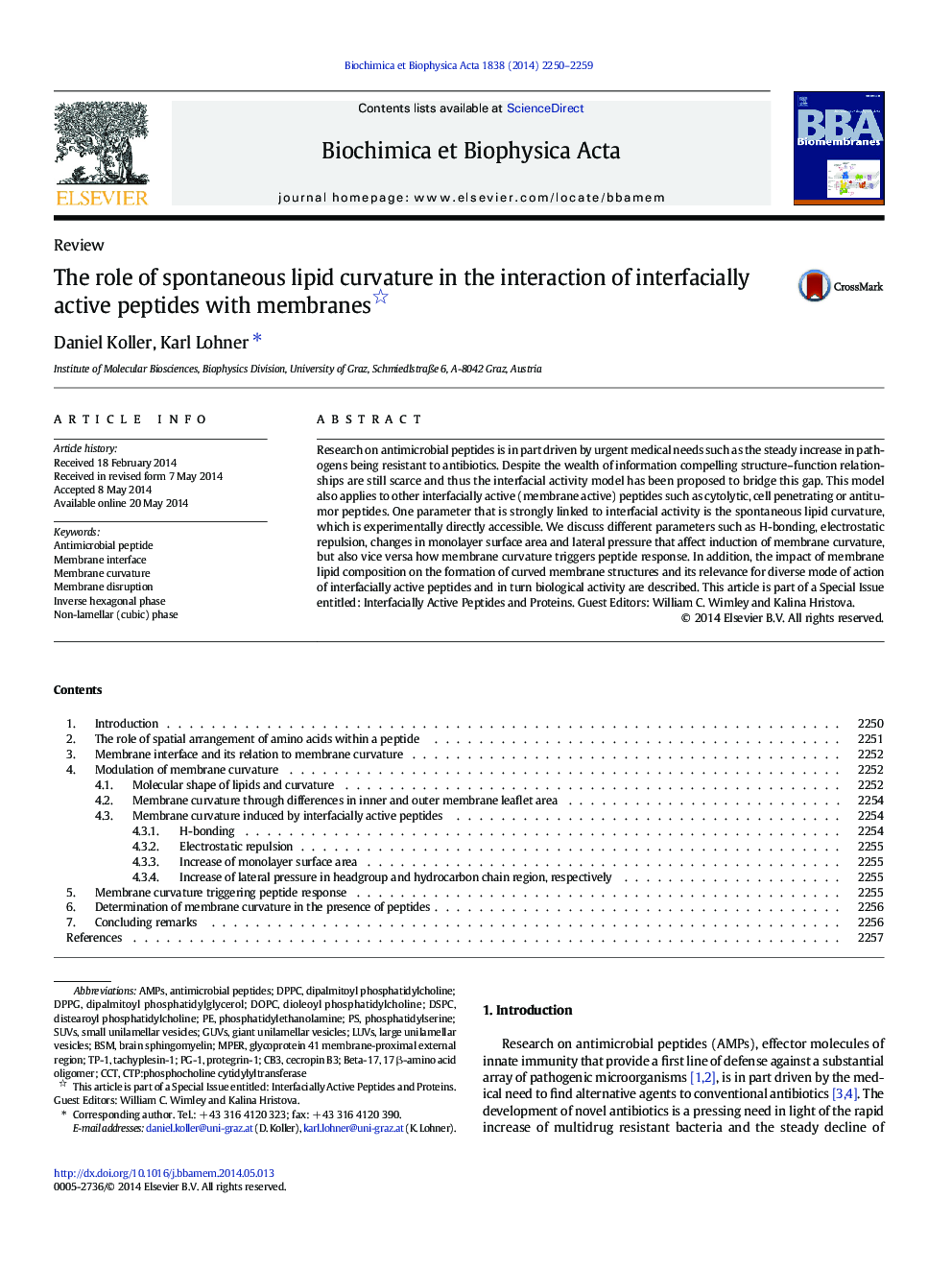| Article ID | Journal | Published Year | Pages | File Type |
|---|---|---|---|---|
| 1944183 | Biochimica et Biophysica Acta (BBA) - Biomembranes | 2014 | 10 Pages |
•Interfacially active peptides can affect lateral pressure in membranes.•Peptide induced curvature strain may be released by formation of curved structures.•Spontaneous curvature can be measured using X-ray scattering on HII phase.
Research on antimicrobial peptides is in part driven by urgent medical needs such as the steady increase in pathogens being resistant to antibiotics. Despite the wealth of information compelling structure–function relationships are still scarce and thus the interfacial activity model has been proposed to bridge this gap. This model also applies to other interfacially active (membrane active) peptides such as cytolytic, cell penetrating or antitumor peptides. One parameter that is strongly linked to interfacial activity is the spontaneous lipid curvature, which is experimentally directly accessible. We discuss different parameters such as H-bonding, electrostatic repulsion, changes in monolayer surface area and lateral pressure that affect induction of membrane curvature, but also vice versa how membrane curvature triggers peptide response. In addition, the impact of membrane lipid composition on the formation of curved membrane structures and its relevance for diverse mode of action of interfacially active peptides and in turn biological activity are described. This article is part of a Special Issue entitled: Interfacially Active Peptides and Proteins. Guest Editors: William C. Wimley and Kalina Hristova.
Graphical abstractFigure optionsDownload full-size imageDownload high-quality image (72 K)Download as PowerPoint slide
